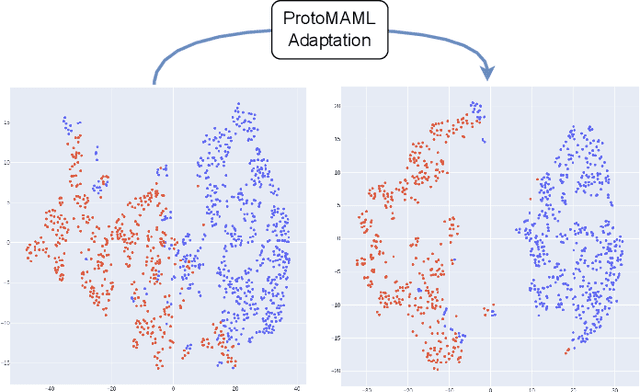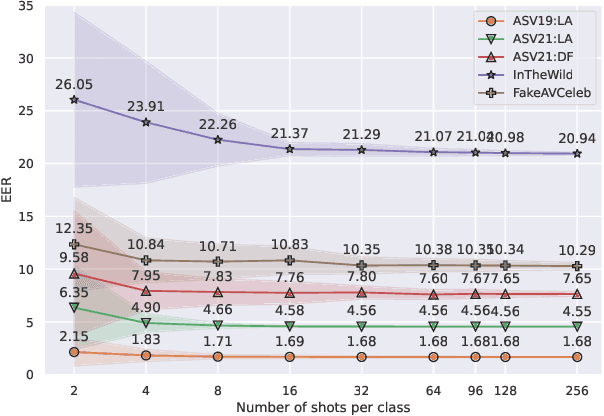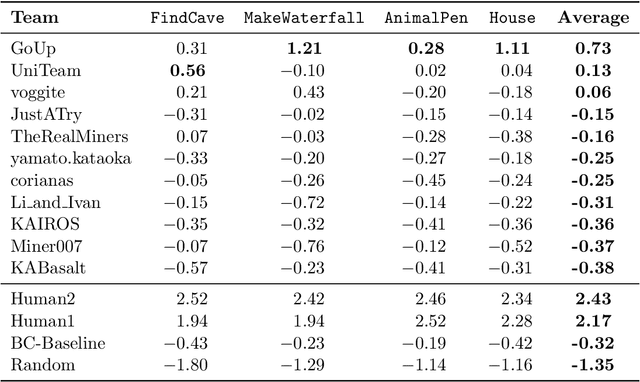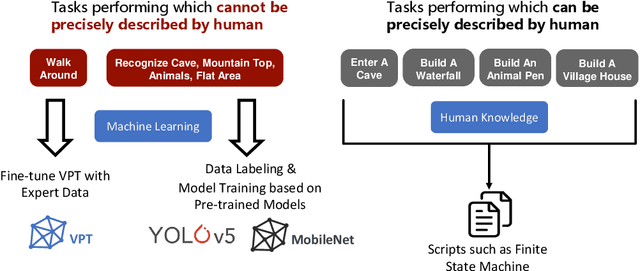Ville Hautamäki
Refining Neural Activation Patterns for Layer-Level Concept Discovery in Neural Network-Based Receivers
May 21, 2025Abstract:Concept discovery in neural networks often targets individual neurons or human-interpretable features, overlooking distributed layer-wide patterns. We study the Neural Activation Pattern (NAP) methodology, which clusters full-layer activation distributions to identify such layer-level concepts. Applied to visual object recognition and radio receiver models, we propose improved normalization, distribution estimation, distance metrics, and varied cluster selection. In the radio receiver model, distinct concepts did not emerge; instead, a continuous activation manifold shaped by Signal-to-Noise Ratio (SNR) was observed -- highlighting SNR as a key learned factor, consistent with classical receiver behavior and supporting physical plausibility. Our enhancements to NAP improved in-distribution vs. out-of-distribution separation, suggesting better generalization and indirectly validating clustering quality. These results underscore the importance of clustering design and activation manifolds in interpreting and troubleshooting neural network behavior.
Meta-Learning Approaches for Improving Detection of Unseen Speech Deepfakes
Oct 27, 2024



Abstract:Current speech deepfake detection approaches perform satisfactorily against known adversaries; however, generalization to unseen attacks remains an open challenge. The proliferation of speech deepfakes on social media underscores the need for systems that can generalize to unseen attacks not observed during training. We address this problem from the perspective of meta-learning, aiming to learn attack-invariant features to adapt to unseen attacks with very few samples available. This approach is promising since generating of a high-scale training dataset is often expensive or infeasible. Our experiments demonstrated an improvement in the Equal Error Rate (EER) from 21.67% to 10.42% on the InTheWild dataset, using just 96 samples from the unseen dataset. Continuous few-shot adaptation ensures that the system remains up-to-date.
Improving Numerical Stability of Normalized Mutual Information Estimator on High Dimensions
Oct 10, 2024Abstract:Mutual information provides a powerful, general-purpose metric for quantifying the amount of shared information between variables. Estimating normalized mutual information using a k-Nearest Neighbor (k-NN) based approach involves the calculation of the scaling-invariant k-NN radius. Calculation of the radius suffers from numerical overflow when the joint dimensionality of the data becomes high, typically in the range of several hundred dimensions. To address this issue, we propose a logarithmic transformation technique that improves the numerical stability of the radius calculation in high-dimensional spaces. By applying the proposed transformation during the calculation of the radius, numerical overflow is avoided, and precision is maintained. Proposed transformation is validated through both theoretical analysis and empirical evaluation, demonstrating its ability to stabilize the calculation without compromizing the precision of the results.
Interpreting Deep Neural Network-Based Receiver Under Varying Signal-To-Noise Ratios
Sep 25, 2024Abstract:We propose a novel method for interpreting neural networks, focusing on convolutional neural network-based receiver model. The method identifies which unit or units of the model contain most (or least) information about the channel parameter(s) of the interest, providing insights at both global and local levels -- with global explanations aggregating local ones. Experiments on link-level simulations demonstrate the method's effectiveness in identifying units that contribute most (and least) to signal-to-noise ratio processing. Although we focus on a radio receiver model, the method generalizes to other neural network architectures and applications, offering robust estimation even in high-dimensional settings.
Natural Language as Polices: Reasoning for Coordinate-Level Embodied Control with LLMs
Mar 20, 2024Abstract:We demonstrate experimental results with LLMs that address robotics action planning problems. Recently, LLMs have been applied in robotics action planning, particularly using a code generation approach that converts complex high-level instructions into mid-level policy codes. In contrast, our approach acquires text descriptions of the task and scene objects, then formulates action planning through natural language reasoning, and outputs coordinate level control commands, thus reducing the necessity for intermediate representation code as policies. Our approach is evaluated on a multi-modal prompt simulation benchmark, demonstrating that our prompt engineering experiments with natural language reasoning significantly enhance success rates compared to its absence. Furthermore, our approach illustrates the potential for natural language descriptions to transfer robotics skills from known tasks to previously unseen tasks.
Gradient weighting for speaker verification in extremely low Signal-to-Noise Ratio
Jan 05, 2024Abstract:Speaker verification is hampered by background noise, particularly at extremely low Signal-to-Noise Ratio (SNR) under 0 dB. It is difficult to suppress noise without introducing unwanted artifacts, which adversely affects speaker verification. We proposed the mechanism called Gradient Weighting (Grad-W), which dynamically identifies and reduces artifact noise during prediction. The mechanism is based on the property that the gradient indicates which parts of the input the model is paying attention to. Specifically, when the speaker network focuses on a region in the denoised utterance but not on the clean counterpart, we consider it artifact noise and assign higher weights for this region during optimization of enhancement. We validate it by training an enhancement model and testing the enhanced utterance on speaker verification. The experimental results show that our approach effectively reduces artifact noise, improving speaker verification across various SNR levels.
Towards Solving Fuzzy Tasks with Human Feedback: A Retrospective of the MineRL BASALT 2022 Competition
Mar 23, 2023



Abstract:To facilitate research in the direction of fine-tuning foundation models from human feedback, we held the MineRL BASALT Competition on Fine-Tuning from Human Feedback at NeurIPS 2022. The BASALT challenge asks teams to compete to develop algorithms to solve tasks with hard-to-specify reward functions in Minecraft. Through this competition, we aimed to promote the development of algorithms that use human feedback as channels to learn the desired behavior. We describe the competition and provide an overview of the top solutions. We conclude by discussing the impact of the competition and future directions for improvement.
Behavioral Cloning via Search in Video PreTraining Latent Space
Dec 27, 2022Abstract:Our aim is to build autonomous agents that can solve tasks in environments like Minecraft. To do so, we used an imitation learning-based approach. We formulate our control problem as a search problem over a dataset of experts' demonstrations, where the agent copies actions from a similar demonstration trajectory of image-action pairs. We perform a proximity search over the BASALT MineRL-dataset in the latent representation of a Video PreTraining model. The agent copies the actions from the expert trajectory as long as the distance between the state representations of the agent and the selected expert trajectory from the dataset do not diverge. Then the proximity search is repeated. Our approach can effectively recover meaningful demonstration trajectories and show human-like behavior of an agent in the Minecraft environment.
Self-Supervised Training of Speaker Encoder with Multi-Modal Diverse Positive Pairs
Oct 27, 2022Abstract:We study a novel neural architecture and its training strategies of speaker encoder for speaker recognition without using any identity labels. The speaker encoder is trained to extract a fixed-size speaker embedding from a spoken utterance of various length. Contrastive learning is a typical self-supervised learning technique. However, the quality of the speaker encoder depends very much on the sampling strategy of positive and negative pairs. It is common that we sample a positive pair of segments from the same utterance. Unfortunately, such poor-man's positive pairs (PPP) lack necessary diversity for the training of a robust encoder. In this work, we propose a multi-modal contrastive learning technique with novel sampling strategies. By cross-referencing between speech and face data, we study a method that finds diverse positive pairs (DPP) for contrastive learning, thus improving the robustness of the speaker encoder. We train the speaker encoder on the VoxCeleb2 dataset without any speaker labels, and achieve an equal error rate (EER) of 2.89\%, 3.17\% and 6.27\% under the proposed progressive clustering strategy, and an EER of 1.44\%, 1.77\% and 3.27\% under the two-stage learning strategy with pseudo labels, on the three test sets of VoxCeleb1. This novel solution outperforms the state-of-the-art self-supervised learning methods by a large margin, at the same time, achieves comparable results with the supervised learning counterpart. We also evaluate our self-supervised learning technique on LRS2 and LRW datasets, where the speaker information is unknown. All experiments suggest that the proposed neural architecture and sampling strategies are robust across datasets.
GAN-Aimbots: Using Machine Learning for Cheating in First Person Shooters
May 14, 2022



Abstract:Playing games with cheaters is not fun, and in a multi-billion-dollar video game industry with hundreds of millions of players, game developers aim to improve the security and, consequently, the user experience of their games by preventing cheating. Both traditional software-based methods and statistical systems have been successful in protecting against cheating, but recent advances in the automatic generation of content, such as images or speech, threaten the video game industry; they could be used to generate artificial gameplay indistinguishable from that of legitimate human players. To better understand this threat, we begin by reviewing the current state of multiplayer video game cheating, and then proceed to build a proof-of-concept method, GAN-Aimbot. By gathering data from various players in a first-person shooter game we show that the method improves players' performance while remaining hidden from automatic and manual protection mechanisms. By sharing this work we hope to raise awareness on this issue and encourage further research into protecting the gaming communities.
 Add to Chrome
Add to Chrome Add to Firefox
Add to Firefox Add to Edge
Add to Edge